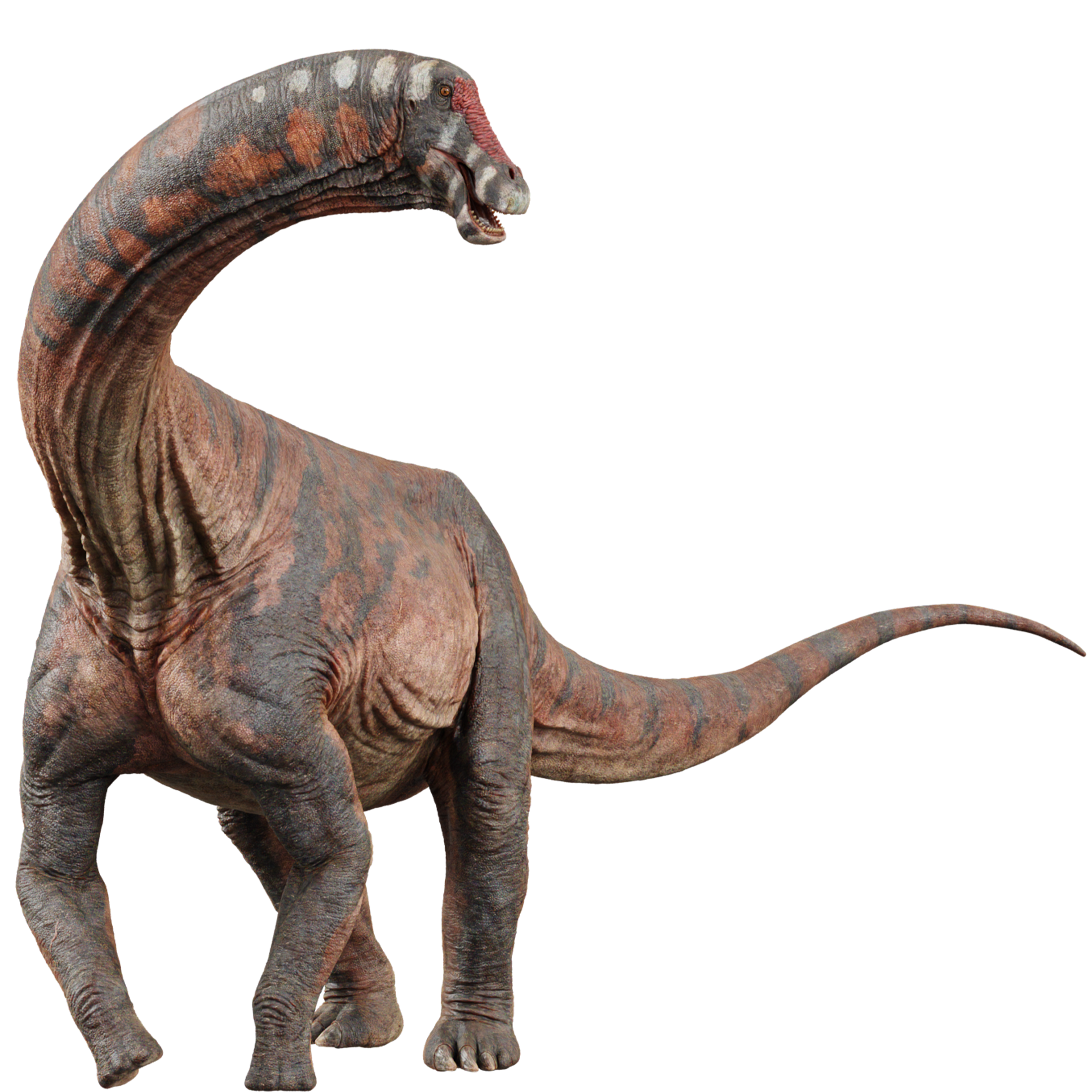Overview: In the Late Cretaceous of Argentina, titanosaurian sauropods thrived. Among them was a relatively short-necked variety discovered in Neuquén, Argentina and named in 2023, Inawentu oslatus. Curiously, despite being a titanosaur, its snout shape distinctly resembles the snouts of rebbachisaurid sauropods which had gone extinct a few million years earlier. This makes it a prime example of the phenomenon of convergent evolution.
Discovery: Inawentu was discovered in the Bajo de la Carpa Formation near Rincón de los Sauces in Neuquén Province, Argentina. The holotype and only known specimen consists of a nearly complete skull, a complete neck, all the dorsal and sacral vertebrae, and both ilia. It is one of only a very few titanosaurs preserving a complete neck making it a special specimen indeed. It was presented at a conference in Argentina in 2016 before being formally named and published in a scientific paper in 2024. The name Inawentu is a Mapundungun (a native language in Argentina and Chile) word meaning "mimic" or "imitator". The species name, "oslatus", is Latin meaning “broad mouth”.
Evolution: Inawentu was a sauropod in the clade Titanosauria. Titanosaurs first appeared in the Early Cretaceous and were descended from relatives of the brachiosaurids. They diversified throughout the Cretaceous, particularly in the southern hemisphere. By the Santonian Age of the Late Cretaceous, when Inawentu lived, Titanosaurs were the last remaining clade of sauropods worldwide. Inawentu was a member of the derived titanosaur clade Eutitanosauria and within that, an unnamed clade of wide-mouthed titanosaurs, which also included Bonitasaura which lived in the same time and place, and Antarctosaurus which may have been one of the largest dinosaurs ever.
Description: At an estimated 15 m (15 ft in length), Inawentu was a large animal, though not especially large for a sauropod. Its neck was also short by titanosaur standards, and it has the fewest number of cervical (neck) vertebrae of any known titanosaur, with a total of only 12. Nevertheless, its neck seems to have been flexible and capable of multidirectional movement. It had a particularly wide and downward-deflected snout. This snout resembles the snouts of the rebbachisaurid sauropods which had gone extinct a few million years earlier and is a prime example of convergent evolution. It is possible that with the extinction of the rebbachisaurids, this lineage of titanosaurs evolved to fill their feeding niche, which resulted in the evolution of rebbachisaurid-like snouts. As such, Inawentu may have been a ground-level non-selective feeder as has been suggested for the rebbachisaurid Nigersaurus, to which the mouth of Inawentu is very similar.
Ecology: Inawentu lived in the Bajo de la Carpa Formation about 86-83 million years ago. It was a habitat dominated by rivers which played host to a number of dinosaurs and other creatures. In addition to Inawentu, several other titanosaurs called the Bajo de la Carpa home, including fellow wide-snouted titanosaurs like the closely related Bonitasaura. Ankylosaurs and ornithopods were also present, though titanosaurs seem to have been dominant herbivores. Preying on these herbivores were predators such as the abelisaurid theropods Viavenator and Llukalkan and the megaraptoran Tratayenia. Hatchling Inawentu may have been prey to smaller predators including crocodiliformes and the unenlagiine dromaeosaur (“raptor”) Diuqin.
Extinction and Legacy: It is unknown exactly when or how Inawentu went extinct, but it is unlikely related to any major extinction event, but rather the constant never-ending ecological change and turnover which has underscored life since the beginning. Nevertheless, other titanosaurs continued on in South America and elsewhere until the very end of the Cretaceous, 66 million years ago. Today Inawentu’ds remains, specimen number MAU-Pv-LI-595, are housed in the Museo Argentino Urquiza in Rincón de los Sauces, Neuquén, Argentina, very near where its remains were recovered.
Inawentu FAQ:
Inawentu size / How big was an Inawentu?
See height, weight, and length.
Inawentu height / How tall was Inawentu?
The height of Inawentu is unknown and as a recently discovered animal, it has yet to have a published height estimate.
Inawentu weight / How much did an Inawentu weigh?
The weight of Inawentu is unknown and as a recently discovered animal, it has yet to have a published weight estimate.
How long was Inawentu?
Inawentu is estimated to have been around 15 m (50 ft) long.
What did Inawentu eat?
Inawentu ate plants.
What is Inawentu’s closest living relative?
Like all dinosaurs, the closest relatives of Inawentu are the only surviving lineage of dinosaurs today, the birds. Crocodilians, while not dinosaurs themselves, are also more distant cousins of dinosaurs.
Inawentu family members / Inawentu family / What kind of dinosaur was Inawentu?
Inawentu was a sauropod (“long-necked dinosaur”) in the clade Titanosauria. It was related to other wide-snouted titanosaurs like Bonitasaura and the giant Antarctosaurus.
Where did Inawentu live? / Where was Inawentu found?
Inawentu lived in South America in what is now Neuquen Province, Argentina.
When did Inawentu live?
Inawentu lived about 86-83 million years ago in the Late Cretaceous Period.
What does Inawentu mean? / Inawentu name meaning
Inawentu means “Immitator”.

